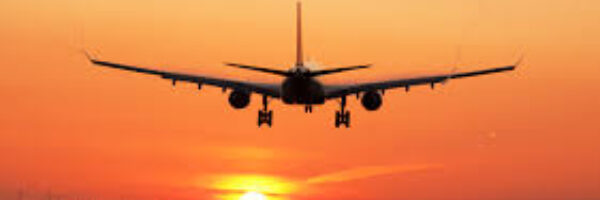
If any industry tells the sorry story of COVID-19 it’s airports. Federal government figures show just 69,476 international travellers flew into Australia in April – most of them almost certainly Australians returning from overseas. Last year this figure was 3.5 million people. The difference represents a 98 per cent drop.
Airports earn revenue through aeronautical charges and other services, which all depend on passenger numbers. No passengers equals no revenue. But they still, quite literally, need to keep the lights on and meet other fixed costs such as security.
Nevertheless, when travel does come back, airports will be at the forefront of meeting all the pent up demand. It’s CFOs who are helping to manage the sudden drop from zero demand to what is likely to be a huge demand for airport services in coming years.
<subhead> Kiwi ingenuity the key
Given the country’s reliance on tourism and its harsh, quickly-imposed lockdown, it’s no wonder Auckland Airport CFO Philip Neutze says COVID-19 has, “absolutely turned our world on its head.”
The airport pivoted almost overnight from a huge focus on delivering well over NZ$2 billion in aeronautical infrastructure projects over two-and-a-half years to either suspending or terminating almost all of those projects. It’s had to draw down on standby bank funding lines to bolster cash reserves and enable near term debt repayments, negotiate bank and USPP covenant waivers and undertake New Zealand’s largest-ever secondary equity raising.
“Now we’re focused on slashing operating expenses by more than 30 per cent in a business with high fixed costs, while revenues are down by more than 75 per cent, to minimise financial losses and cash burn,” says Neutze.
“This is extremely difficult for everybody in the organisation as a large proportion of those op ex savings must come from lower staffing levels,” he adds.
Neutze thinks it will take at least three to five years to get back to pre-COVID-19 aeronautical demand levels at Auckland Airport.
“Our aviation recovery could be slower than some American and European markets where COVID-19 will never be eliminated.”
<subhead> Cloudy skies for Queensland
At Queensland Airports, chief financial officer Amelia Evans says the priority has been protecting jobs and the sustainability of the business, which owns and operates Gold Coast, Townsville, Mount Isa and Longreach airports.
“Obviously liquidity’s a discussion point and we’ve spent a lot of time dealing with our banks to ensure we have their support. I’ve had to personally engage with every single bank we have. Banks in Australia and internationally have been very supportive.
“We’ve also had to make really hard decisions around standing people down and redundancies. That’s in some ways more challenging because we’re talking about people and lives. COVID-19 has created the opportunity to revisit our workforce plan and understand what a bare minimum business looks like.”
Evans says the path to recovery from here is uncertain. “But we do know it’s coming. Recovery is subject to borders opening and airlines’ decisions about their network and capacity. Once it kicks off, we believe the recovery in Queensland is going to be pretty amazing because there’s so much demand.”
Still in Queensland, Brisbane Airport CFO David Malek says cost management is a huge focus. “The runway has to stay on, the lights have to stay on at the terminals and we still need to make sure the airport is safe and secure.”
While certain things remain the same, Malek says the pandemic has changed the airport’s view of its future. Having welcomed 25 million passengers last year, it expected to double passenger numbers to get to 48 million passengers by 2040. But that’s likely to be delayed by three to five years.
“But you never know, given pent up demand. Australia’s an island nation with low intermodal substitution and we love to travel. So we’re pretty confident when numbers do pick up they will do so quite strongly. But we have certainly been re-evaluating current and future projects.”
Given so many unknowns, Malek and his team have been building flexibility into planning and forecasting. “Long gone are the days you set an annual budget and did a quarterly reforecast. Since February, we’ve been doing an almost weekly forecast of passengers.”
Like all the airports in this story, Brisbane Airport is privately-owned. Amsterdam Airport owns just under 20 per cent of the business, and understands full well the stresses its asset is under. Superannuation funds, which have yet had to inject capital but are willing to do so, own the rest of the business.
In terms of airports’ performance as an asset, Malek says the pandemic is a black swan event and airports as well as other infrastructure assets such as sea ports and toll roads and will one day again perform in line with the broader economy once more normal conditions return.
<subhead> Up, up and away
All the CFOs interviewed for this story agree it’s likely hygiene practices will change permanently at international airports, with more social distancing and more terminal floor area needed per passenger. Detection measures like temperature checks will become widespread, in addition to the compulsory use of face masks.
As safe bubbles begin to open up between countries with low incidences of COVID-19, mandatory testing may be imposed along with health declarations and compulsory use of contract tracing apps.
With COVID-19 cases still rising exponentially around the world, it’s still likely to be some time before airports have a chance to put any of these measures in place. But given CFOs’ focus on risk, when we do take to the skies again, at least we can be assured they will have done everything to ensure our safety.
